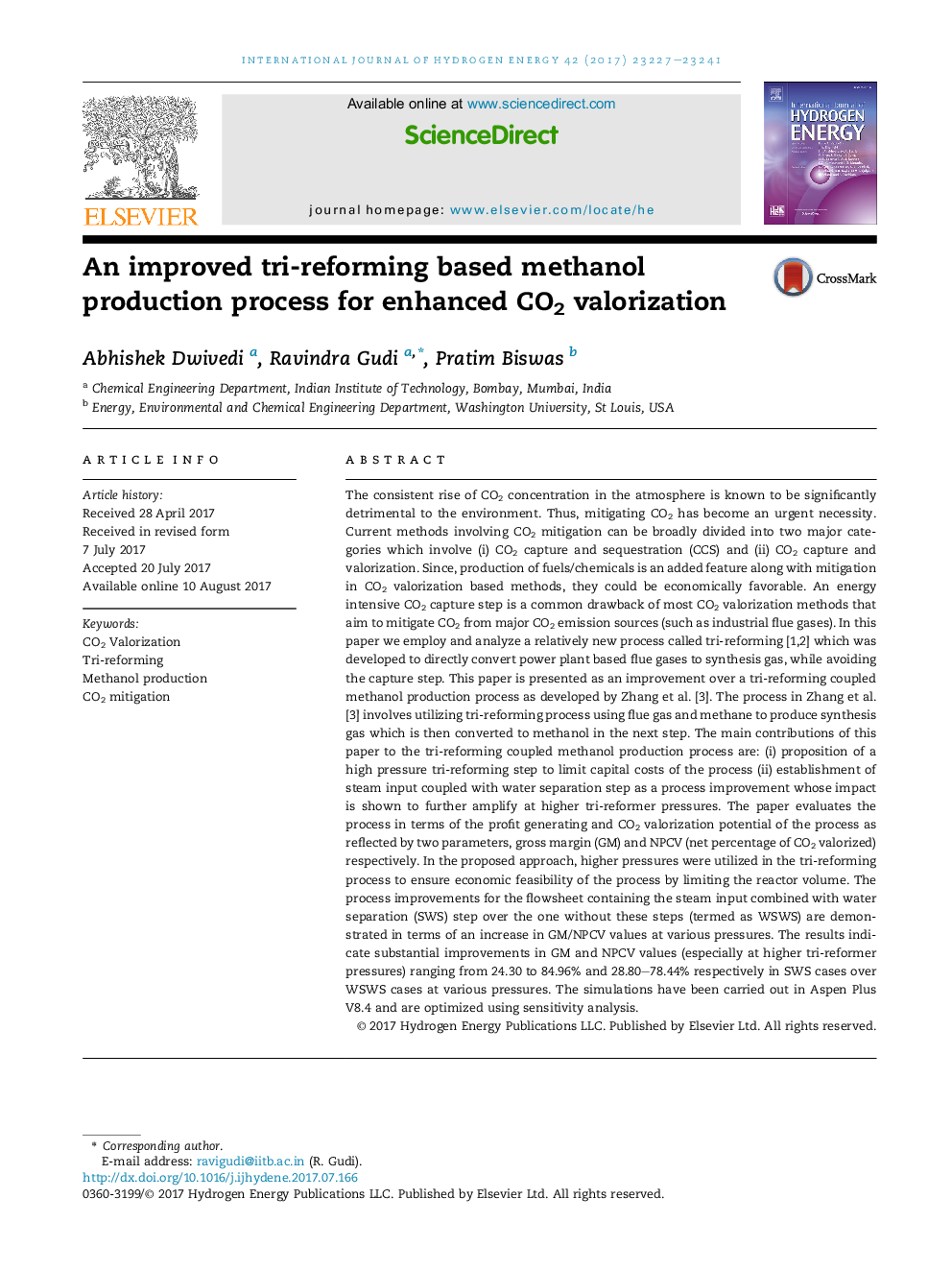| Article ID | Journal | Published Year | Pages | File Type |
|---|---|---|---|---|
| 5145309 | International Journal of Hydrogen Energy | 2017 | 15 Pages |
â¢Proposition of a high pressure tri-reforming step to limit capital costs.â¢Steam input coupled with water separation step (SWS step) as process improvement.â¢Amplification of SWS step caused improvements at higher tri-reformer pressures.â¢Postulation of CO2 valorization potential of the process as a design metric.
The consistent rise of CO2 concentration in the atmosphere is known to be significantly detrimental to the environment. Thus, mitigating CO2 has become an urgent necessity. Current methods involving CO2 mitigation can be broadly divided into two major categories which involve (i) CO2 capture and sequestration (CCS) and (ii) CO2 capture and valorization. Since, production of fuels/chemicals is an added feature along with mitigation in CO2 valorization based methods, they could be economically favorable. An energy intensive CO2 capture step is a common drawback of most CO2 valorization methods that aim to mitigate CO2 from major CO2 emission sources (such as industrial flue gases). In this paper we employ and analyze a relatively new process called tri-reforming [1,2] which was developed to directly convert power plant based flue gases to synthesis gas, while avoiding the capture step. This paper is presented as an improvement over a tri-reforming coupled methanol production process as developed by Zhang et al. [3]. The process in Zhang et al. [3] involves utilizing tri-reforming process using flue gas and methane to produce synthesis gas which is then converted to methanol in the next step. The main contributions of this paper to the tri-reforming coupled methanol production process are: (i) proposition of a high pressure tri-reforming step to limit capital costs of the process (ii) establishment of steam input coupled with water separation step as a process improvement whose impact is shown to further amplify at higher tri-reformer pressures. The paper evaluates the process in terms of the profit generating and CO2 valorization potential of the process as reflected by two parameters, gross margin (GM) and NPCV (net percentage of CO2 valorized) respectively. In the proposed approach, higher pressures were utilized in the tri-reforming process to ensure economic feasibility of the process by limiting the reactor volume. The process improvements for the flowsheet containing the steam input combined with water separation (SWS) step over the one without these steps (termed as WSWS) are demonstrated in terms of an increase in GM/NPCV values at various pressures. The results indicate substantial improvements in GM and NPCV values (especially at higher tri-reformer pressures) ranging from 24.30 to 84.96% and 28.80-78.44% respectively in SWS cases over WSWS cases at various pressures. The simulations have been carried out in Aspen Plus V8.4 and are optimized using sensitivity analysis.
